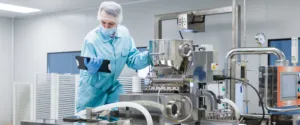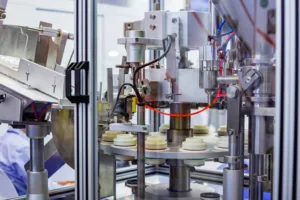In the realm of industrial machinery, the quest for optimal performance often revolves around a fundamental parameter: speed, Whether it’s in the context of air drives or motors, understanding the nuances of speed values is paramount for engineers and manufacturers alike. From pneumatic systems to electric motors, each technology offers distinct advantages and trade-offs in terms of speed capabilities. This article aims to dissect these disparities, shedding light on the factors influencing speed values and guiding decision-making processes in the realm of industrial automation.
The Basics: Defining Speed
Before delving into the intricacies of air drives and motors, let’s establish a common understanding of speed. In the realm of machinery, speed refers to the rate at which a device moves or operates, typically measured in units such as rotations per minute (RPM) or meters per second (m/s). It serves as a critical performance metric, impacting efficiency, productivity, and overall system functionality.
Air Drives: Harnessing Pneumatic Power
Pneumatic systems, which utilize compressed air to generate mechanical motion, have long been favored for their simplicity, reliability, and cost-effectiveness. In pneumatic setups, speed values are primarily influenced by factors such as air pressure, flow rate, and the design of pneumatic components.
1. Air Pressure: The pressure of the compressed air serves as a primary determinant of speed in pneumatic systems. Higher pressure levels result in greater force and faster actuation speeds, allowing for swift movement of pneumatic cylinders and other components.
2. Flow Rate: The flow rate of compressed air also plays a crucial role in dictating speed. A higher flow rate facilitates rapid pressurization and depressurization of pneumatic actuators, leading to quicker response times and increased operational speed.
3. Component Design: The design and specifications of pneumatic components, such as cylinders and valves, significantly impact speed values. Factors such as bore diameter, stroke length, and valve actuation speed influence the overall performance of pneumatic systems.
Electric Motors: Unleashing Electromechanical Precision
In contrast to pneumatic systems, electric motors harness the power of electricity to drive mechanical motion. Electric motors offer precise control, high torque output, and variable speed capabilities, making them ideal for applications requiring precision and versatility.
1. Voltage and Frequency: In electric motor-driven systems, speed values are closely tied to voltage and frequency inputs. By adjusting voltage levels and frequency parameters, operators can regulate motor speed with precision, enabling fine-tuning to suit specific application requirements.
2. Motor Type: Different types of electric motors, such as DC motors, AC induction motors, and synchronous motors, exhibit varying speed characteristics. For instance, DC motors offer linear speed-torque characteristics and are well-suited for applications requiring precise speed control.
3. Control Systems: The integration of sophisticated control systems, such as variable frequency drives (VFDs) and servo drives, further enhances the speed control capabilities of electric motors. These systems enable dynamic speed adjustments, rapid acceleration/deceleration, and precise positioning, enhancing overall system performance.
Bridging the Gap: Factors Influencing Speed Selection
When selecting between air drives and electric motors for a given application, several factors must be considered to ensure optimal performance and efficiency:
1. Application Requirements: The nature of the application, including speed, torque, and precision requirements, plays a crucial role in determining the most suitable technology. High-speed, high-precision applications may Favor electric motors, while pneumatic systems excel in applications requiring rapid actuation and simplicity.
2. Energy Efficiency: Electric motors often boast higher energy efficiency compared to pneumatic systems, especially in continuous operation scenarios. However, pneumatic systems offer advantages in applications where intermittent operation and rapid cycling are prevalent.
3. Cost Considerations: Cost considerations, including initial investment, operational expenses, and maintenance requirements, influence the economic viability of each technology. While pneumatic systems may offer lower upfront costs, electric motors may prove more cost-effective in the long run due to lower energy consumption and maintenance needs.
4. Environmental Factors: Environmental considerations, such as ambient conditions, cleanliness requirements, and regulatory compliance, may dictate the suitability of air drives or electric motors for a given application. For instance, pneumatic systems are often preferred in harsh environments or areas where electrical hazards pose a risk.
In the realm of industrial automation, the quest for optimal speed values is an ongoing endeavour shaped by a myriad of factors, including technology capabilities, application requirements, and economic considerations. By understanding the differences between air drives and electric motors, engineers and manufacturers can make informed decisions, leveraging the strengths of each technology to achieve desired performance outcomes. Whether it’s harnessing the power of compressed air or unleashing electromechanical precision, the pursuit of speed remains a cornerstone of innovation in the modern era of machinery and automation.
For further insights and detailed technical information, consult the Pocket Guide to Air Motors by Atlas Copco or Contact us directly.


